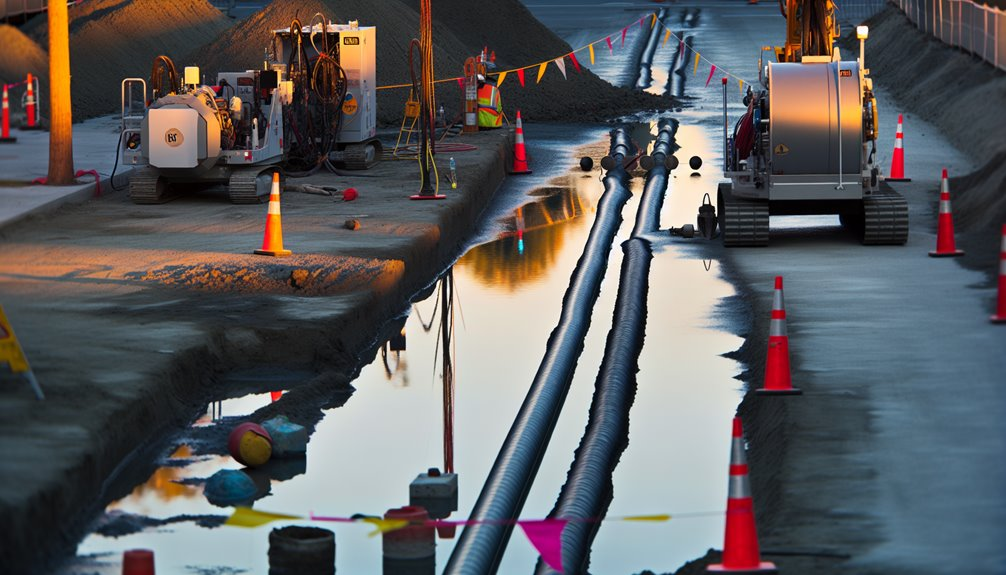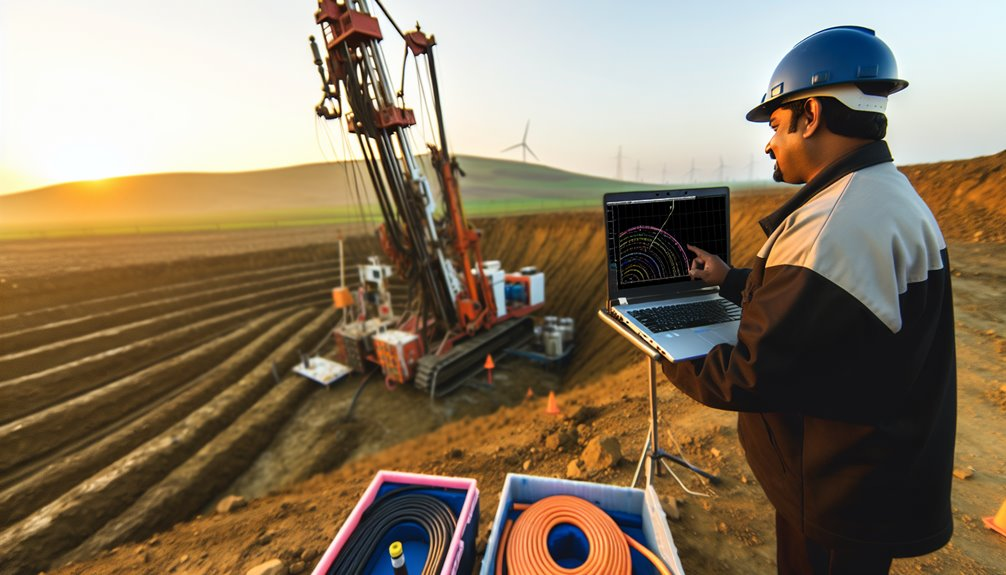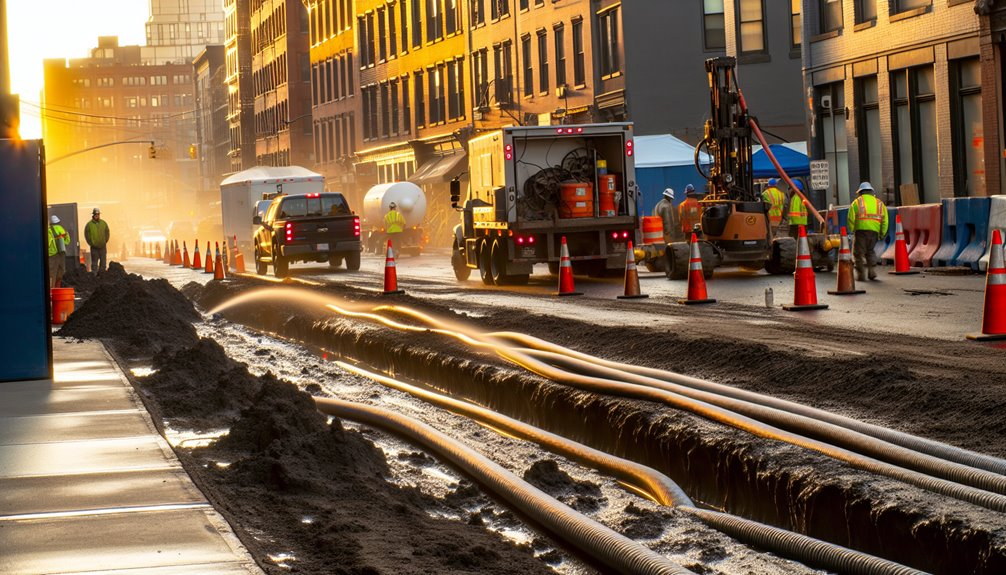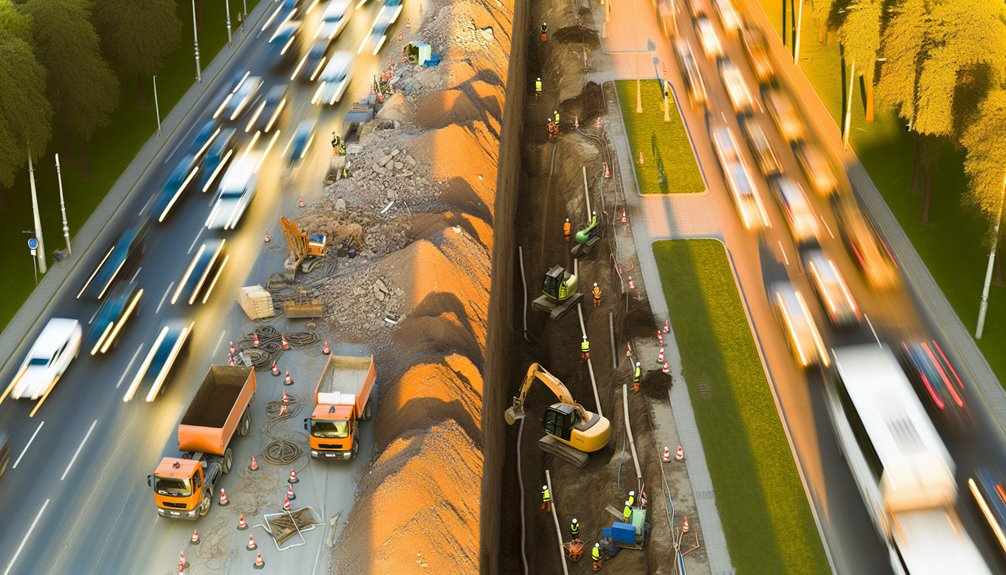Choosing between missile boring and HDD comes down to shot length, soils, accuracy, and budget. You’ll trade speed and low setup for limited steering and tolerance with missiles, versus precise guidance, fluid control, and staged reaming with HDD at higher cost and complexity. Clean sands and short, small-diameter runs favor missiles; mixed or rocky ground and longer, larger installations favor HDD. The nuance is in quantifying thresholds—diameter, depth, risk, and schedule—before committing.
How Missile Boring Works vs. How HDD Works
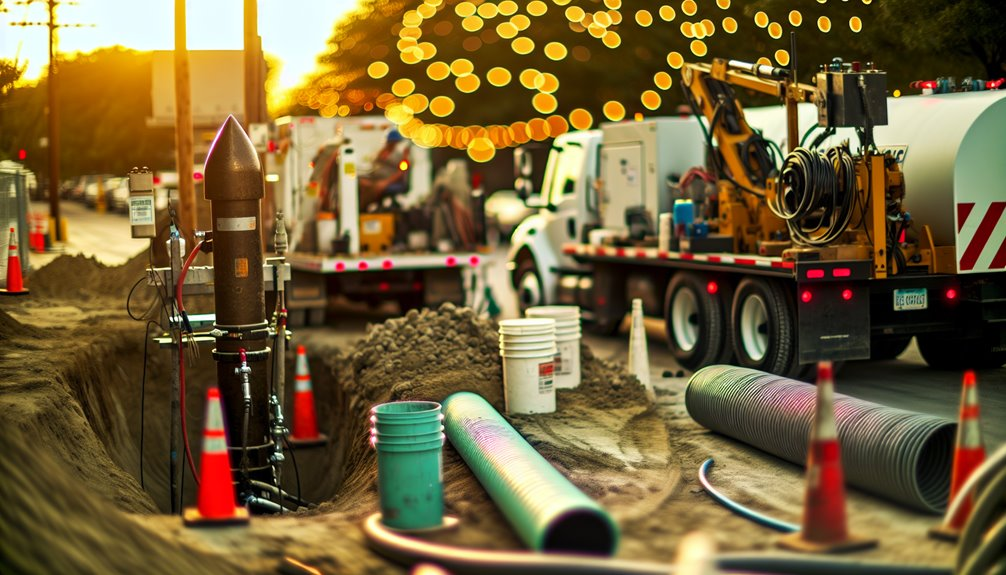
Although both are trenchless, missile boring advances a pneumatic “mole” that percussively drives a straight bore along a preset line, while HDD steers a fluid-assisted drill head along a designed trajectory.
You deploy missile boring for short, shallow crossings in granular soils. Compressed air cycles a piston, and impact mechanics transfer energy to the nose cone, yielding 3–10 ft/min in sands and silts with minimal spoils. You typically launch from a pit, confirm exit with probe rods, and pull in small-diameter conduit.
HDD starts with a pilot rod pushed by a drill rig and powered by drilling fluid circulation for cuttings transport and bit cooling. You then ream in stages to the target diameter and pull back product pipe, managing fluid returns and annular pressures.
Precision, Steering, and Tracking Capabilities
With the mechanics of each method in mind, focus on how accurately you can place the bore and verify its path. HDD gives you continuous steerable guidance with articulated drill heads and downhole sondes. You correct course in small increments, holding tolerances within inches over hundreds of feet using real time tracking, gyro navigation for magnetically noisy corridors, and laser tracking in short, line-of-sight runs. You log depth, pitch, roll, and azimuth to maintain designed separations and utility clearances.
Missile boring is largely ballistic. You “steer” by adjusting launch angle, air pressure, and tip geometry, then confirm endpoints with surface locating. Mid-run corrections are limited. Expect wider tolerance bands and shorter control windows. If you need verifiable, repeatable alignments, HDD’s measurement stack outperforms pneumatic systems consistently.
Soil and Site Conditions That Favor Each Method
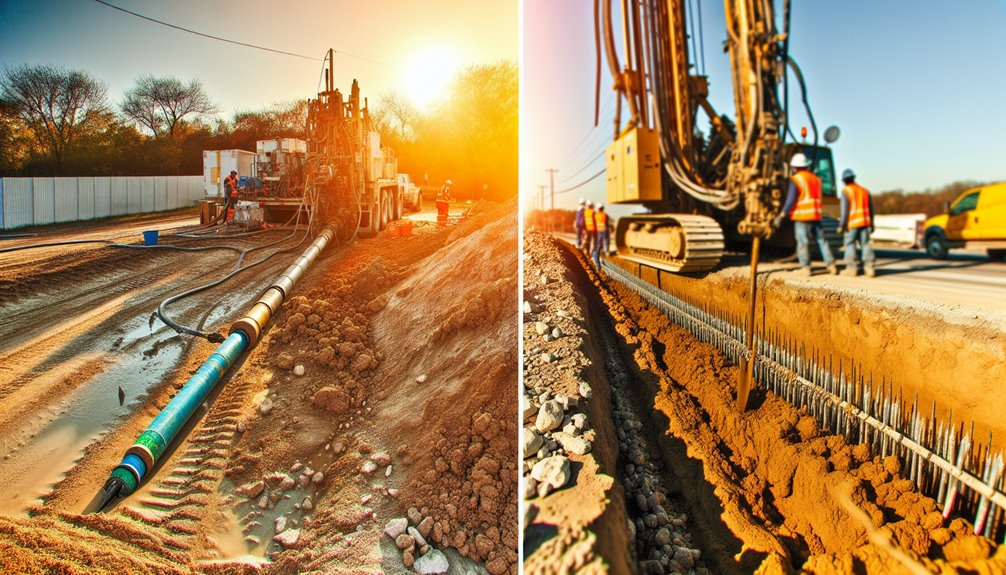
Matching the tool to the ground starts with grain size, cohesion, and obstructions. In clean sands to silty sands (N60 > 10, PI 25% by volume; expect deflection and tool damage. In clays with moderate cohesion (Su 25–75 kPa), missiles track acceptably, but swelling or fissured clays reduce accuracy.
Choose HDD when you face mixed soils, Rocky terrain, or layered profiles where steering and fluid support matter. HDD’s drilling fluid stabilizes loose sands and soft clays, manages a High water table by controlling pore pressures, and reduces collapse risk. Avoid HDD in highly permeable gravels without fluid loss control. Validate with borings, CPT, and spoil logs.
Diameter, Distance, and Depth Limitations
Soil-driven tool choice sets the stage, but geometry limits often decide the method. You’ll size the bore to conduit compatibility and verify drill withstandability against thrust, torque, and fluid pressure. Missile boring excels at short, shallow shots (typically ≤100 ft) and small diameters (1–6 in). HDD spans longer distances (hundreds to thousands of feet) and larger diameters with staged reaming. Depth is governed by cover requirements, steering accuracy, and annular pressure control to prevent frac-out or heave. Minimum bend radii, entry/exit angles, and available staging space further bound feasibility.
- Tight easement, 40-ft shot, 2-in service
- 600-ft river crossing, 12-in force main
- 8-ft cover under pavement, 3-in gas line
- 24-in casing, 900-ft HDD with mud motor
- Compound curve to meet utility clearance and bend limits
Cost, Schedule, and Risk Trade-Offs
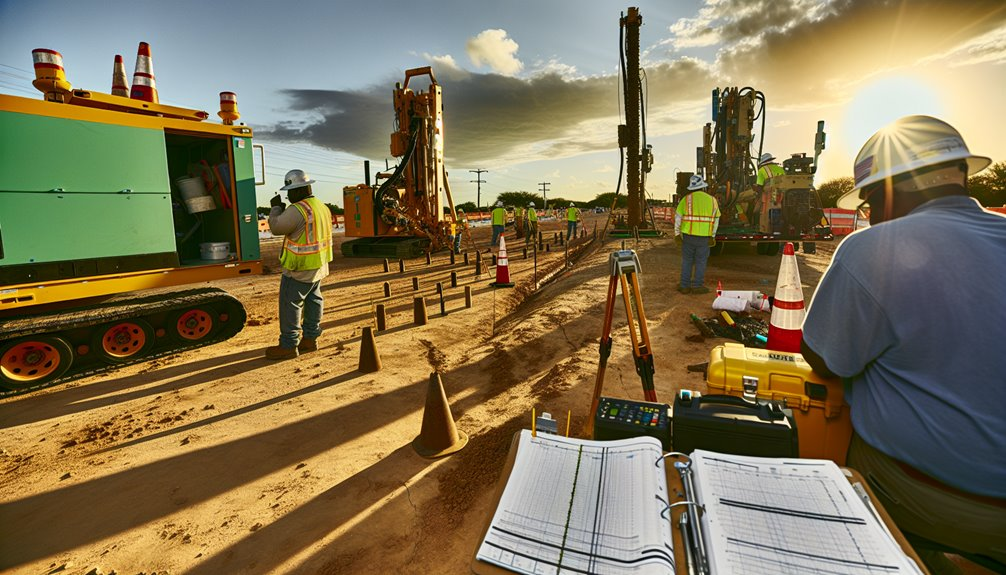
Although both methods avoid open-cut restoration costs, they diverge sharply on unit rates, mobilization, and contingency. Missile boring typically yields lower $/LF for short crossings and small diameters, with minimal setup and lean crews. HDD carries higher day rates due to drill spreads, fluids, and tracking, but scales efficiently over longer runs. You’ll budget more for engineering, QA/QC, and inadvertent return mitigation on HDD.
Schedule hinges on labor availability, permit timelines, traffic control, and utility locates. Missile crews mobilize fast; HDD schedules depend on rig logistics, mud supply, and disposal capacity.
Risk profiles differ: missiles risk line/grade drift and utility strikes; HDD risks frac-outs, pullback lock-up, and tooling loss. Allocate contingency to geotech uncertainty, third-party damages, and downtime.
Choosing the Right Method for Common Scenarios and Applications
With cost, schedule, and risk parameters defined, apply them to typical use cases. For shallow service laterals in stable soils, you’ll favor missile boring for speed and low mobilization. For longer, curved alignments under roads, rail, or waterways, choose HDD for steering, grade control, and precise depth. In dense urban utilities corridors, HDD’s tracking and avoidance reduce conflicts and environmental impact. Where frac-out risk is unacceptable, select missile boring in coarse, non-cohesive soils; in clays or mixed ground, HDD with drilling fluid management performs reliably. Validate choices with geotech data, utility locates, and allowable tolerances.
- Night work beneath a live street
- River crossing to a treatment plant
- Fiber loop threading congested downtown
- Gas main replacement under a boulevard
- Campus chilled-water lateral beneath landscaping
Conclusion
As the owner of Boring Bros., I’d sum it up like this: choose missile boring for short, straight runs in clean sands or silts when you want fast, low‑setup, cost‑effective installs and steering precision isn’t critical, and choose HDD when you need surveyed accuracy, curves, longer distances, larger pipe, or you’re dealing with mixed or rocky ground and fluid management. Make sure you quantify bore length, diameter, depth, and tolerances; test the soils; model frac‑out risk; and price mobilization so you can match the method to your risk tolerance, schedule, and QA/QC needs — that’s the best way to minimize rework, tool loss, and total installed cost. If you want to talk through a specific job or need help picking the right technique, come visit us at boringbro.com or give me a call at (954) 639-6167 — we’re happy to help.

